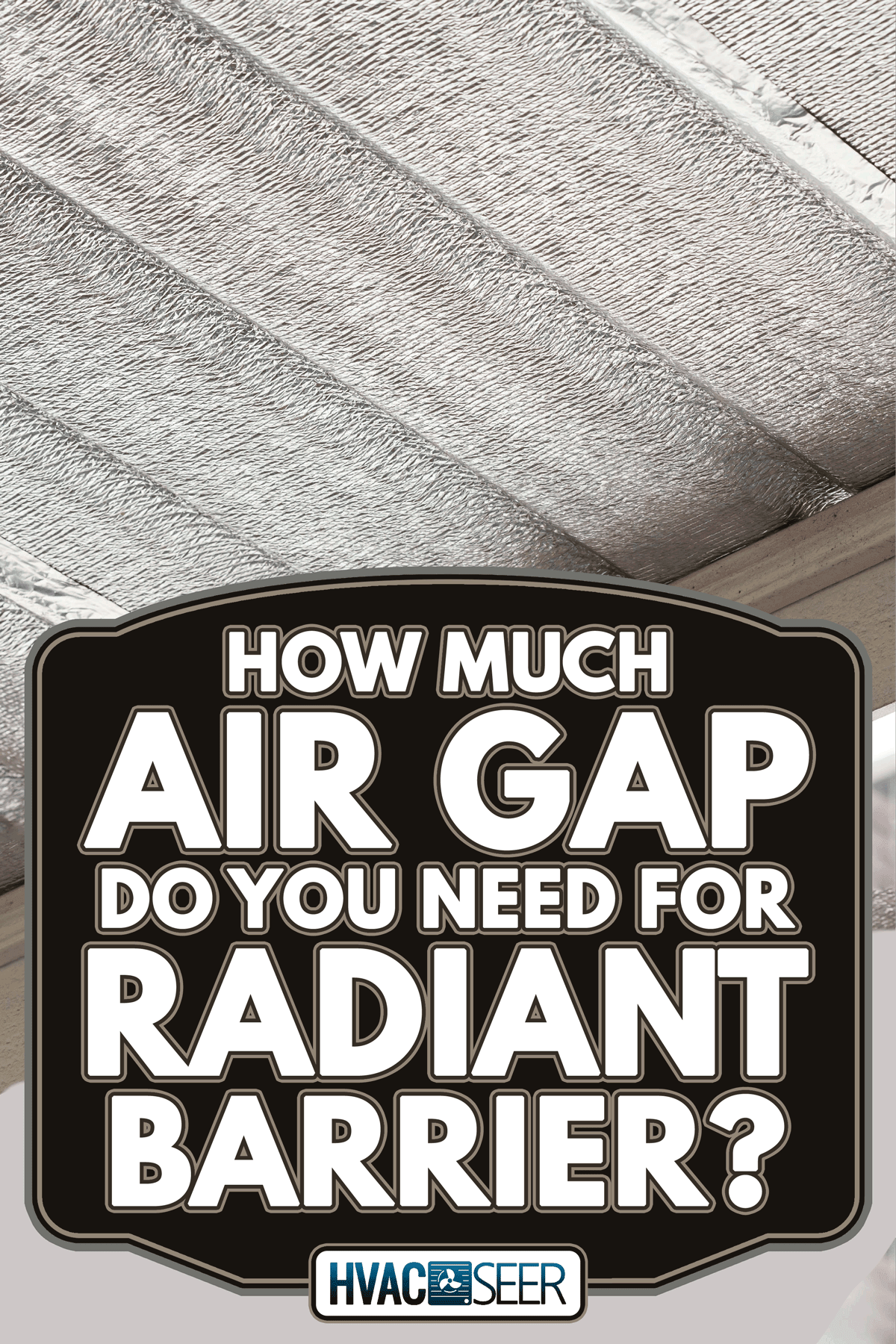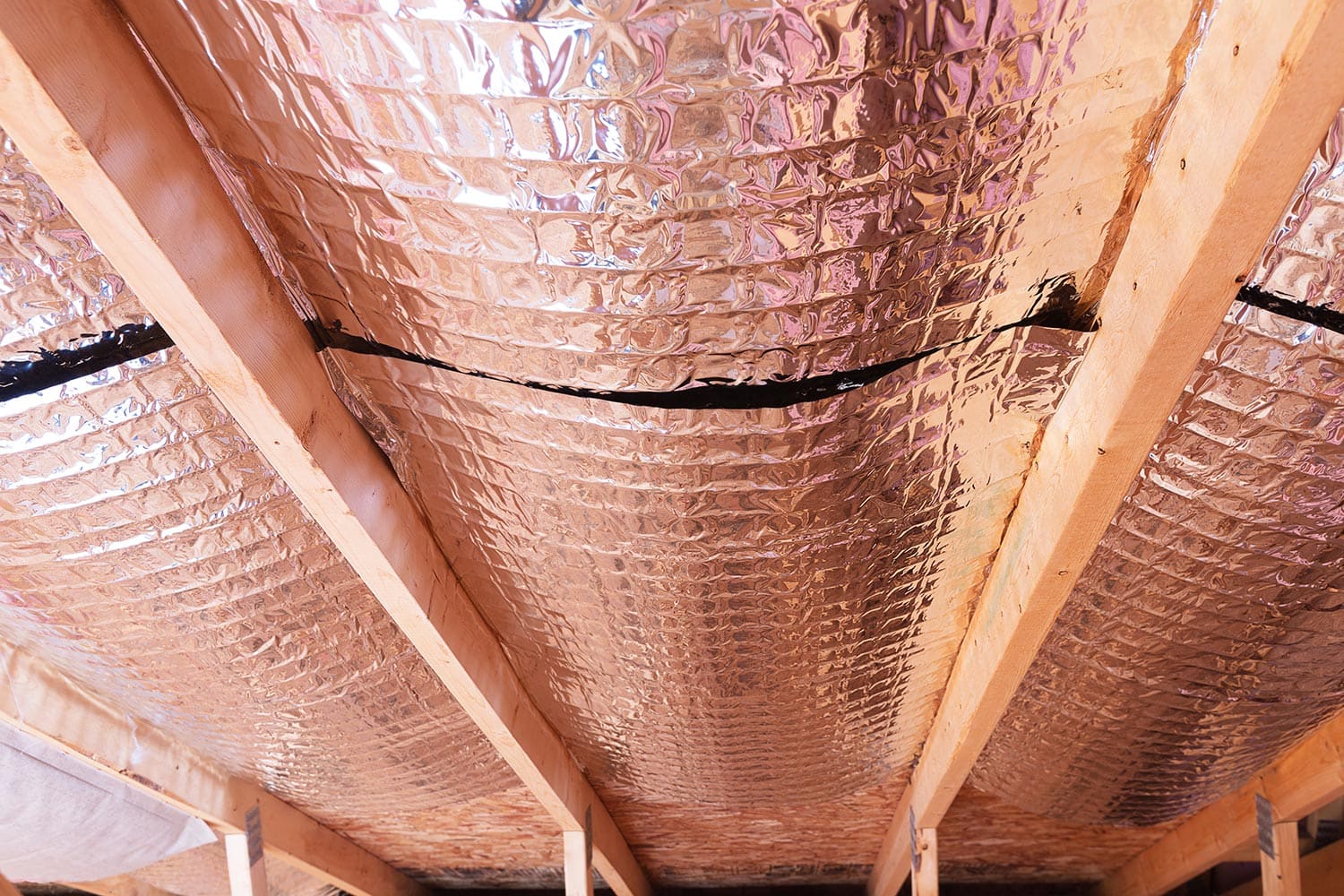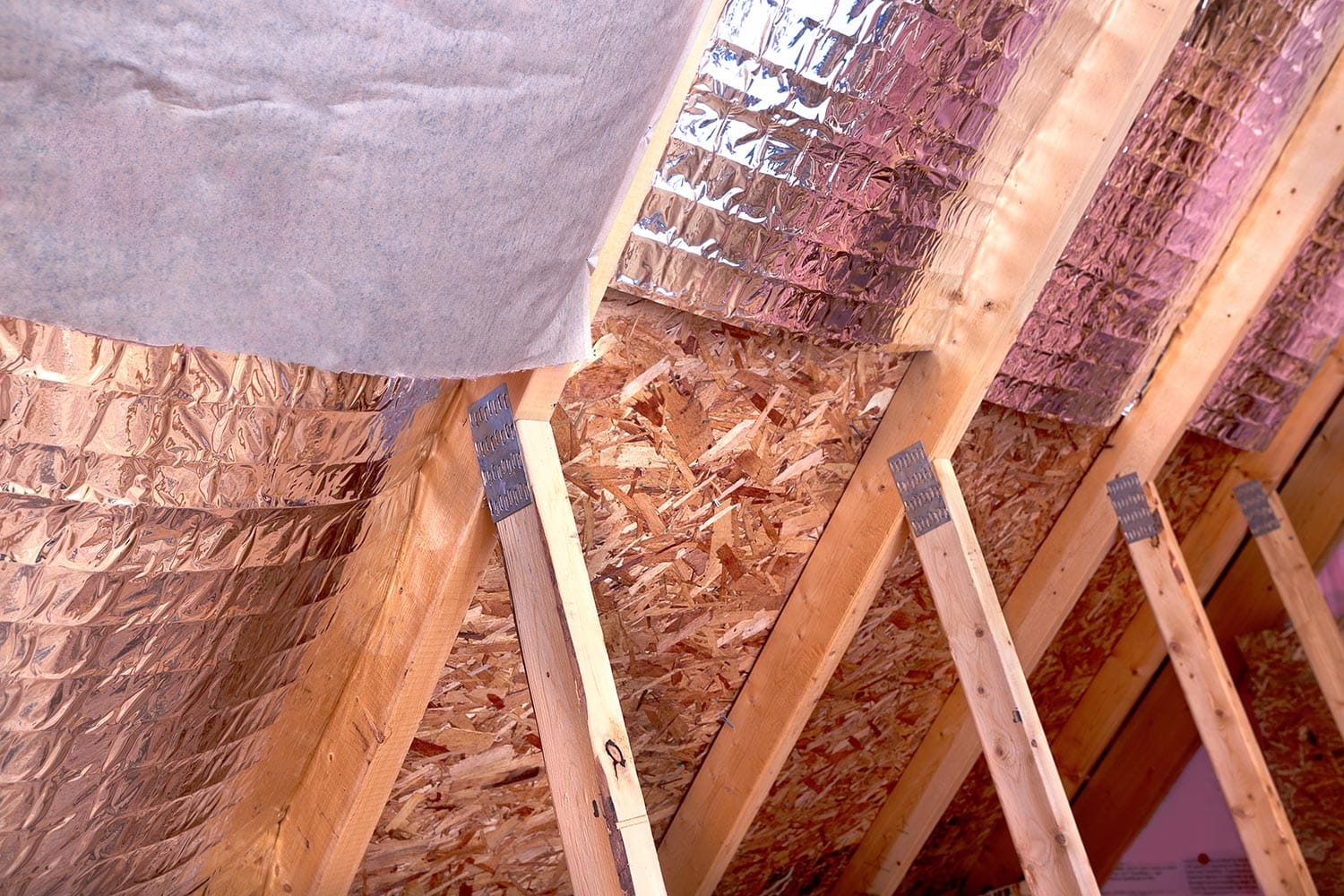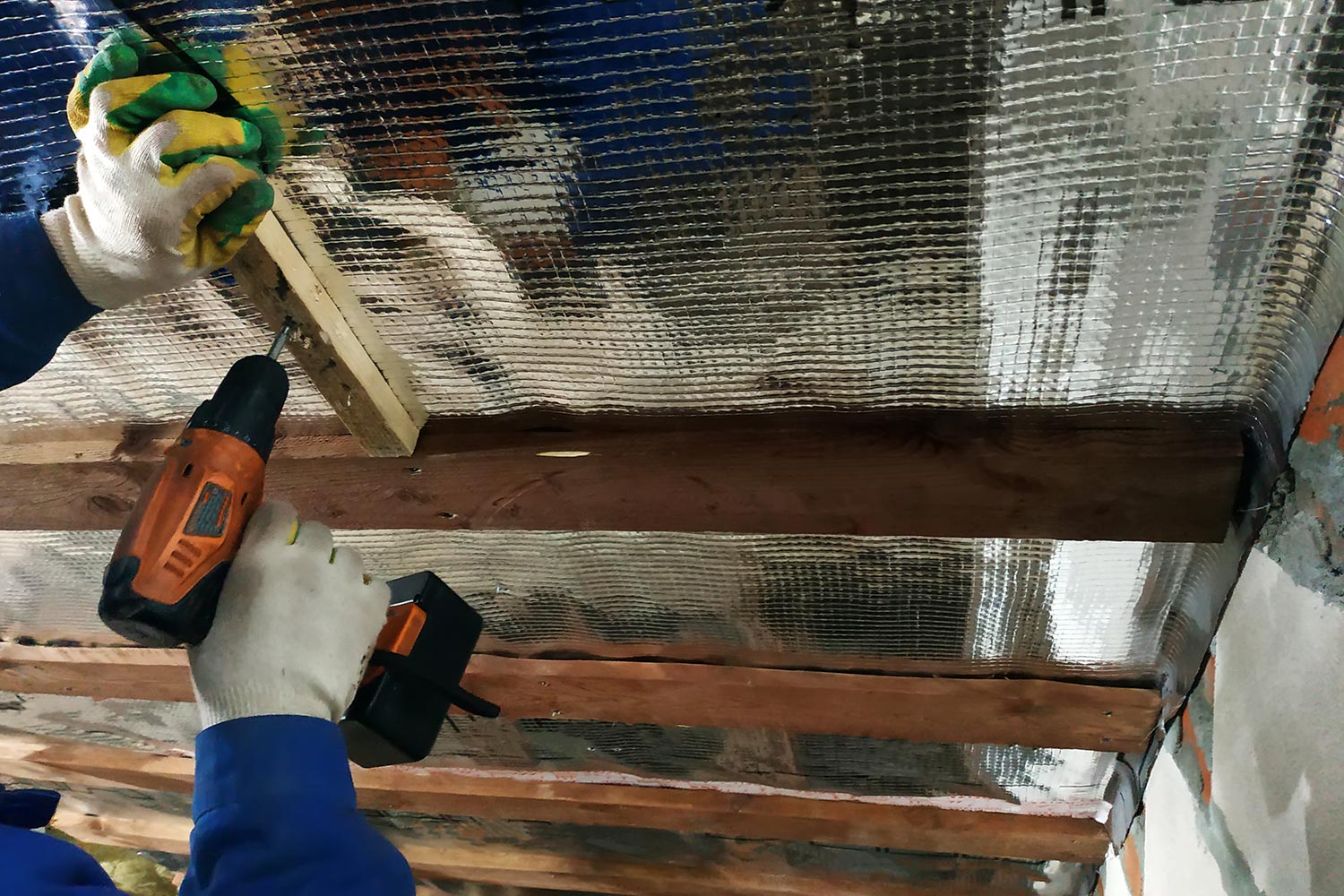Installing radiant barriers isn't just all about putting the materials in place. Some specific dimensions or measurements must be set up. We went through the internet to gather information about radiant barriers, and we focused on how much of an air gap is needed, specifically, to answer this question for you.
The air gap that the radiant barrier requires is between 1/2" and 3/4". If you want to expand the space, there is no problem with it as long as it provides ventilation.
We have so much information in our pockets that we want to share with you about installing radiant barriers, so stay with us to learn more!

Why Is An Air Gap Required for Radiant Barrier
To better understand why is an air gap needed in a radiant barrier, you must know what radiant heat is. It is a form of heat that transfers through space. To set an example, think of the sun. That is how its heat reaches the earth. Radiant heat needs space to exist.
If space or an air gap doesn't exist, it isn't radiation anymore. We basically have a solid that requires conduction (direct contact). And to clearly explain the process, without an air gap, you cannot have radiant heat. And in the absence of radiant heat, radiant barriers won't work.
How Does Radiant Barrier Work?

Are you curious about the work process of radiant barriers? In this part, we are to explain how it operates.
Radiant Barrier During Summer
During the hot summer days, the sun gives us immeasurable heat. The radiant heat that exists on the underside of the roof, for example, is prevented by the radiant barrier from getting into a structure. As a result, it cools the temperature on the interior surface.
A radiant barrier is generally most effective during summer, mainly when the air ducts are located in the attic. According to the Department of Energy, a radiant barrier can lower the cooling costs from five to ten percent when used in a hot climate.
The reduced heat that enters can even permit you to have a compact air conditioning system. To clarify, you have to improve your attic insulation for a better and smaller HVAC system.
Radiant Barrier During Winter
Radiant barriers prevent winter heat loss during cold days. During times like this, conduction and convection slow down the heat flow. However, radiant barriers work by reducing the flow of radiant heat.
The heat that escapes on your ceiling during winter is radiant heat. Despite this, a properly placed radiant barrier has the ability to reflect the heat back into your home before it escapes the area.
Radiant Barrier Uses
You are mistaken if you think radiant barriers only work for one area. Let us give you examples.

1. New Build Homes
There are many uses of radiant barriers in our homes. For instance, you can use it for a new construction home. You can use it with the rafter by stapling it. Consider doing this before the completion of your roof decking. Look at the list below where you can use radiant barriers.
- Garage
- House wrap
- Wood frame building
- Metal frame building
- Cathedral/Vaulted ceiling
- Stud wall cavity
- Workshop
- Single and multi-family units
2. Existing Homes
Just like a new construction home, you can staple the radiant barrier to the rafter of your existing home. You can additionally use it with the areas below.
- Basement
- Garage
- Dog house
- Carpet pad
- Crawlspace
- Playhouse
- Water heater
- Workshop
3. Commercial Buildings and New Construction
Radiant barriers are helpful when it comes to reducing heat. Use it to have a comfortably cool commercial building. Here are the lists of where you can use radiant barriers.
- Metal buildings
- Plants
- Office buildings
- Warehouses
- Self-storage units
- Overhead doors
4. Automotive
Since radiant barriers are conventional when reducing heat, it gives the best result to automotive uses. Some examples are:
- Sunshields
- RV
- Conversion vans
- Firewall
- Door panels
- Headliners
5. Industrial Application
It is a good thing that radiant barriers exist. It can contribute to the efficiency of:
- Pipes
- Tanks
- Laboratories
- Heat shields
- Boilers
6. Food Service
Yes, you can also use radiant barriers in food services. Amazing, right?
- Freezers
- Kitchens
- Coolers
- Delivery bags
- Ovens
- Food Wraps
7. Shipping
You can wrap some shipping products using radiant barriers. Examples are:
- Thermal bags
- For shipping containers
- Railroad cars
- Can serve as temperature protection for certain types of food
- Box liners
8. Agricultural Uses
Radiant barrier's purposes in agriculture:
- Metal buildings
- Livestock trailers
- Incubators
- Pole barns
- Post-frame construction
9. Other Uncommon Uses
You can use radiant barriers additionally for:
- Saunas
- Airplane (survival equipment)
- Spas
- Heat shields
- Canvas buildings
- Modular buildings
Check this Foam Core Radiant Barrier on Amazon.
Installing Radiant Barriers Requires A Professional

If you plan to do it yourself, you may want to think again and contemplate. You don't want to compromise your comfort and energy-saving, do you?
For a proper and satisfactory installation, we suggest you hire a professional. Doing so will ensure the maximum function and effectiveness of a radiant barrier. You may also ask for sealing attic air leaks if they do such a thing.
Advantages of Radiant Barriers
- It can reduce the attic temperature by 30 degrees Fahrenheit.
- It can help on preventing solar radiation up to 97 degrees.
- Radiant barriers can provide you faster heating and cooling process with fewer cycles. As a result, it will help extend the longevity of your HVAC systems. Another thing is can reduce the need for repairs.
- It works to keep solar radiant heat out during summer and keeps the warm air in during the cold days.
- If your HVAC system and air ducts are located in the attic, radiant barriers are of great help in reducing utility costs. In addition, it can also improve energy efficiency.
- Using a radiant barrier may allow you to use even a cheaper and smaller HVAC system.
- It has considerable control over humidity, air conditioning, and heating.
- Radiant barriers offer more relaxed and comfortable air conditioning and heating.
- There is no maintenance required.
- It can even last for a lifetime.
- Radiant barriers don't attract mold.
Drawbacks of Radiant Barriers
- It doesn't attract mold. However, dirt and dust can build up. But in general, you can't consider this as a total disadvantage. It can still work efficiently, even having dust and dirt on it.
- It is not as effective in cold climates as in warm climates. Yes, the radiant barrier is undoubtedly effective and energy-efficient in the summer heat. However, it is not the same in colder weather. We suggest using a radiant barrier with thermal insulation to achieve optimum results.
- Radiant barriers do not address conductive heat gain. It simply means it will not be able to put a stop to other heat gains from the conduction and convection process. And as a result, you might consider installing thermal insulation with radiant barriers in your attic.
FAQs About Radiant Barrier
If the information above is still not enough, this part might help you even better.
Why Doesn't It Have An R-Value?
R-value is the measurement of how well a two-dimensional barrier resists the conductive heat flow. Radiant barriers offer us distinct advantages. They work in reducing radiant heat gain into a structure. And that will result in having a cooler temperature in the interior area. But that factor can not be quantified by an R-value.
What Are The Types Of Radiant Barrier?
Numerous radiant barriers are available on the market. But all of them fall into two categories:
- Aluminum Foil Laminates. These are aluminum foils that are laminated to plastic films, kraft paper, or oriented strand boards.
- Aluminized Plastic Films. Using a vacuum process, it deposits a thin layer of aluminum particles on the film.
Radiant Barrier Vs. Mass Insulation - Which is Better?
The two give different benefits yet complement each other if installed together.
The radiant barrier can make the mass insulation more productive because the attic temperature is lower. As a result, the conductive heat transfer that the mass insulation will need to address is lesser.
Does It Affect Cell Signal and WiFi?

Both WiFi and cell signals use radio waves for communicating information. And metal can affect the transmission. We all know that radiant barriers contain a thin coating of aluminum. That means it can affect WiFi and cell signals, although it will be just minimal.
Will Radiant Barriers Damage My Shingles?
No, the radiant barrier definitely won't ruin your shingles. Some studies show that the shingle temperatures only jump up roughly two to five degrees Fahrenheit using a radiant barrier. It still falls within the 200 degrees Fahrenheit shingle temperature that most companies authorize.
Bottom Line
To summarize everything, all you need to have is a properly insulated attic. Installing a radiant barrier is a great option to consider for your home and many areas. But keep in mind that an air gap is always the key. As it will prevent extreme heat, reduce HVAC workload, will help you achieve optimum temperature, and lastly, it can maximize energy efficiency.
Do you want to continue reading? Check these out!
How To Insulate Garage Door For Summer To Keep Heat Out?

